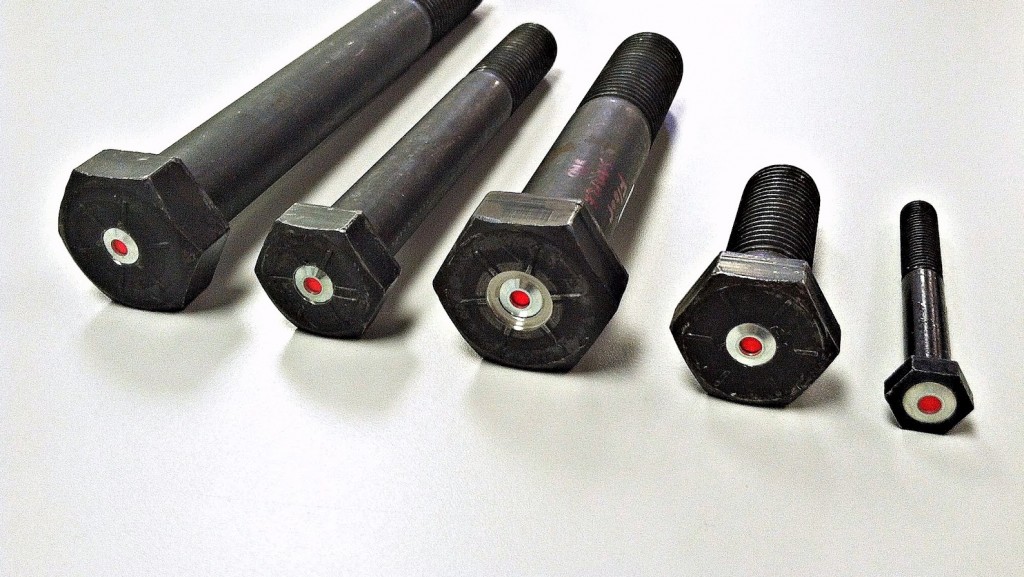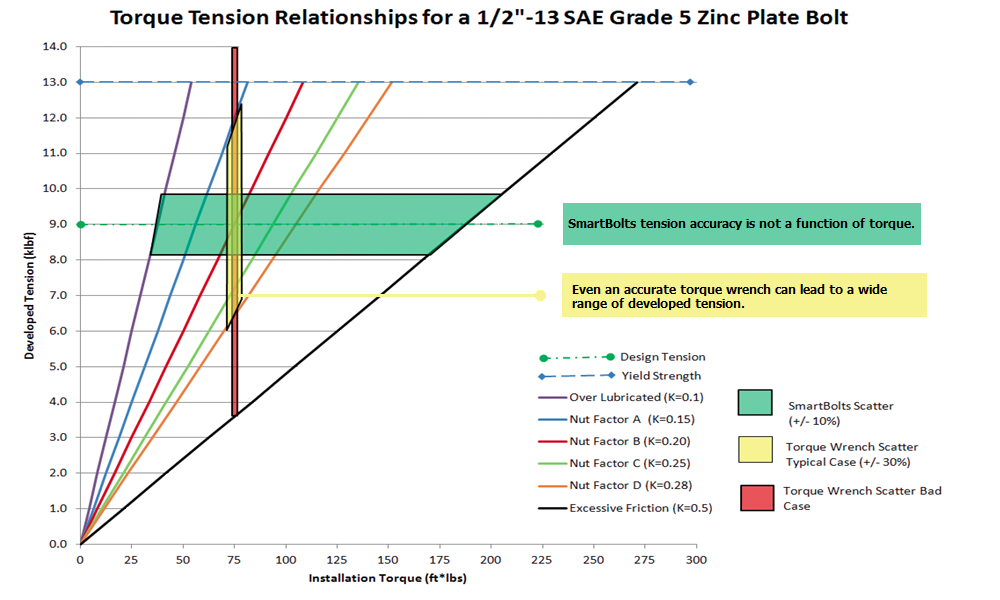An explanation of the nut factor can get complicated very quickly. The nut factor is a grouping of the assumptions associated with torque measurement into one number. It exists to streamline and simplify all of the many factors affecting the use of torque measurement to achieve the desired result – precise clamp force on the joint. Clamp force on a bolted joint is created by its opposite and equal, bolt tension.
The many factors influencing the Torque-Tension Relationship include the material, size, plating, surface finish, thread lubricants, corrosion and wear of fasteners, nuts and washers, among others. The nut factor conveniently summarizes all of the many variables that are known to influence the torque-tension relationship. It is an empirical value that linearly models the rate at which tension is developed within a fastener when torque is applied.
An empirical value requires observation and testing to ensure accuracy. In structured environments, such as a laboratory, testing processes can be controlled. However, in the work sites where the actual installation and maintenance occurs, unexpected influences can creep in. In these environments, the nut factor becomes unpredictable.
Torque-Tension Relationship Model:
The following equation estimates the amount of torque required to achieve a predetermined clamp force if the diameter of the bolt is known.
T=KFD
T=torque, F=force, D=diameter, and K=nut factor*.*In this equation the nut factor is often assumed to be 0.2. It can widely vary as a result of many factors.
The problem is that the nut factor can vary in each and every case. Consider the example of an oil & gas company constructing a pipeline. The pipeline is comprised of many sections of pipe, fastened together at flanged connections. A team of highly capable engineers calculate that each section of pipe must be joined with a specific clamp force. Too much force and pipes are damaged. Not enough clamp force and the pipes leak. Reaching and maintaining a specific bolt tension, and therefore clamp force, is imperative.
So the engineers do what engineers do – they test. Clean, brand new bolts are tested with a device of similar size and dimension to the pipeline’s flanged connections. The engineers ensure the device is clear of debris and apply lubricant to the threads of the fasteners being tested to ease installation. The engineers reach the desired clamp force with a certain amount of torque, say 100 lbs-ft.
The engineers now confidently specify 100 lbs-ft of torque to be applied to the fasteners in the pipeline’s flanged connections expecting to reach the desired clamp force.
The work site is not as strictly controlled as the engineer’s test environment. In this example, fasteners have been transported cross-country and are now coated with dirt or rust. The pipeline’s flange connections are exposed to the weather. Thread lubricant is a different type or not used at all. The result is that the nut factor has changed and is now unknown. Similar examples exist throughout industry, which make the nut factor the biggest mystery when it comes to bolted joint security.
When the field workers apply 100 lbs-ft of torque to the fasteners in the pipeline’s flanged connections, the actual bolt tension, and resulting clamp force, is different than what was predicted by the engineers back in the laboratory. In this case, the pipelines were not securely joined; leakages occurred and costly repairs were needed.
When torque is the only method of measurement, a change in one element, such as thread lubricant, will modify the nut factor and therefore the clamp force developed on a bolted joint. This is because torque is not directly measuring bolt tension. It is a twisting force that results in rotation. The nut factor is the summary of all factors that affect this twisting force. As these factors vary, torque will provide varying levels of bolt tension, resulting in inconsistent installations and greater requirement for maintenance.
We recommend bypassing torque measurement entirely, instead going straight to the goal: precise bolt tension. By measuring tension directly, you can achieve consistent clamp force on critical bolted joints. SmartBolts® measure developed tension in a fastener with a distinct color spectrum. Unlike torque tools, SmartBolts® Visual Indication System™ is not affected by variations in nut factor. Reliable bolt tension measurement contributes to safe and reliable operation of your critical systems.


